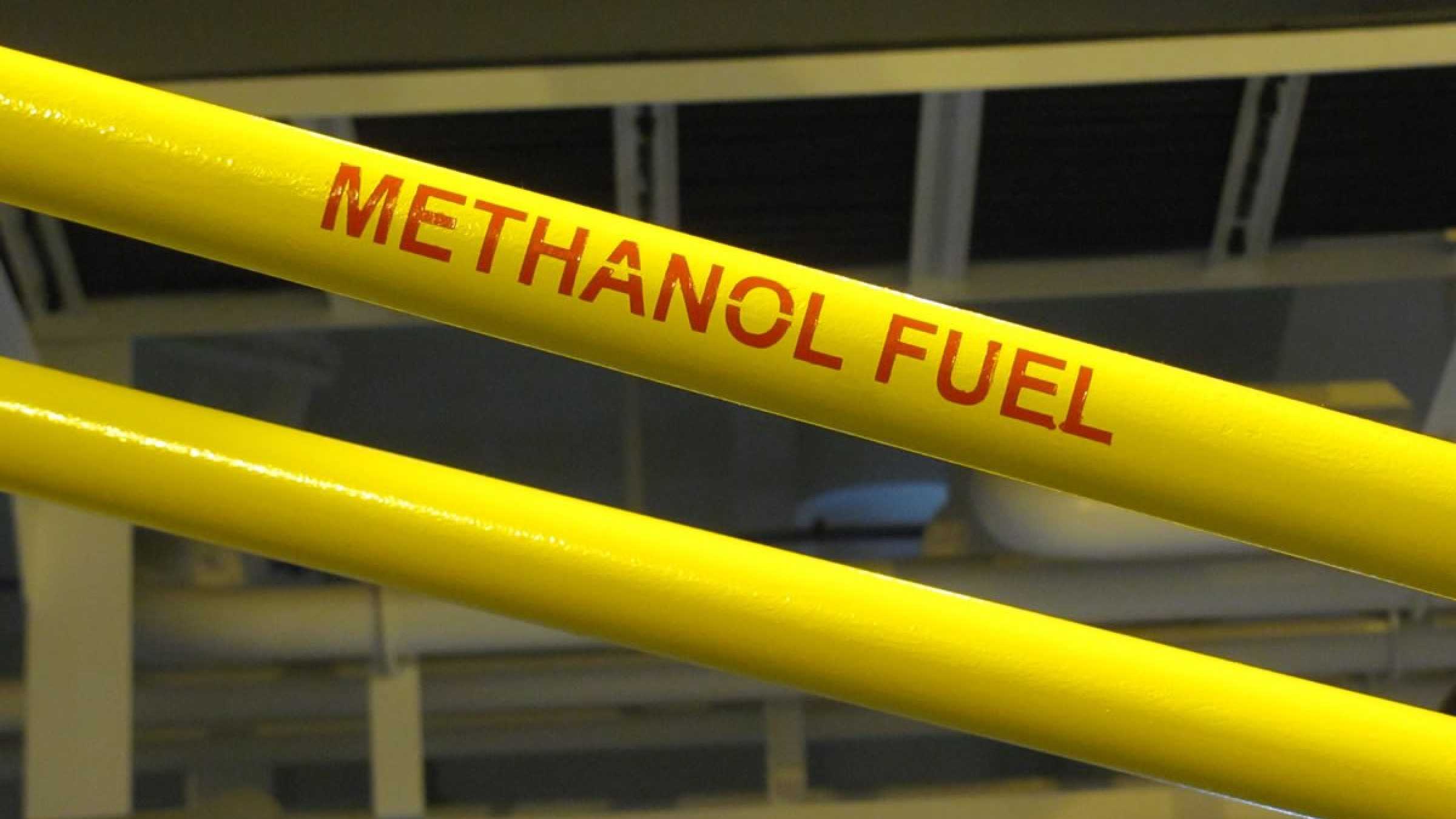View this content on ShipInsight.
Methanol as fuel “is a technology that works,” reported Paul Hexter, president of Waterfront Shipping. “It is clean-burning, cost-effective and readily available and we’ve had good success with it so far.”

He was speaking to invited guests – including ShipInsight – on 15 August, the day before the latest addition to its fleet, the 49,000dwt methanol tanker Mari Couva, was named and delivered by Hyundai Mipo Dockyard to its owner Marinvest for charter to Waterfront.
His company is a subsidiary of the world’s largest methanol producer, Methanex, and has more experience than any other ship owner or operator in using methanol as fuel. Once its sister ship Mari Kokako is delivered on 9 September, plus two similar ships by the end of the year, Waterfront will be operating 11 methanol-fuelled ships.
Waterfront and its supporting owners have an obvious incentive to use methanol: except when they are carrying backhaul cargoes, their ships are full of it. Marinvest started looking into using methanol as fuel in 2012, initially to explore whether some of its ships could be retrofitted to burn it, before deciding instead to focus on newbuildings.
But whether it is practical for the wider shipping community depends on the answers to some key questions: Where is it available? Is there enough of it? What does it cost? Is it safe? What regulations govern it? ShipInsight took the opportunity of our visit to South Korea to explore those questions.
Where is it available?
According to a survey conducted by the Methanol Institute – an industry body whose members include companies involved in methanol production and distribution – methanol is already potentially available from most of the world’s top ports (by tonnage). Chris Chatterton, the institute’s chief operating officer, told ShipInsight on 22 August that its full data will be published “in about a week” but provided a summary that showed its survey had covered 151 ports, of which 97 had “methanol directly in, or in close proximity to, the port.” Those include 88 of the top 100 ports.
Speaking before last week’s ship naming, he had contrasted his survey’s findings with the availability of low sulphur fuel that is being promised by some major fuel suppliers: one “just announced they will make their IMO 2020 fuel available in 12 ports, [another] has eight, [another] has three or four and [a fourth supplier] announced they would allow their fuel to be trialled but would not make it available on a continuous basis.” On that basis, he added, “you can see there’s no problem enabling it to be taken up as a bunker fuel.”
Will there be enough?
ShipInsight asked Mr Chatterton whether there would be sufficient methanol available if large numbers of owners decided to use it for fuel. It is a question he has been asked before. “A lot of people” are looking into using methanol, he said, and “the simple answer is, yes, it’s not a problem.”
He took a hypothetical example of a “major shipper” that might need around 5M tonnes per year. There is plenty of “cold capacity available that could come on line” to provide that sort of volume, he said, and if demand rose by, say, 20M tonnes per year over three or four years, that could be met by building more methanol production capacity. It only takes 24-36 months to open a natural-gas-fed methanol plant; about half the time needed to increase refinery or liquefaction capacity, he added.
To put that in perspective, about 34-35M tonnes of methanol is currently traded internationally, with growth of about 4-5% per year. This represents an additional one or two ‘world-scale plants’ per year, which each produce about 5,000 tonnes/day, although the market could absorb two or three such plants per year without having too much affect on price, he said.
What does it cost?
Price comparisons between marine fuels should take account of their relative calorific values and methanol’s is about half that of conventional marine fuels, which means that twice as much must be injected into the engine for the same power output; the implications of this for the engine’s design will be covered in a later article.
When prices are compared on a cost-per-energy basis, methanol and MGO follow similar trends, according to a graph presented during the pre-naming briefing byPaul Hexter, president of Waterfront Shipping.
It showed seven years of price movements between the two fuels, up to December 2018, during which time methanol was sometimes the cheaper fuel; sometimes MGO. On average, however, methanol has been cheaper than MGO over that period, he said; in some regional markets it has sometimes been as much as 20% cheaper. But Waterfront’s ship’s engines can quickly switch between different fuels “so you can pick and choose the most cost-effective fuel at the time.”
Methanex believes that methanol pricing is more stable and more transparent than for other fuels. Its business development director Stuart McCall said that the company posts its contract prices on its website – “it’s a global product,” he said – and Mr Hexter predicted that, as the 1 January 2020 low-sulphur deadline approaches, prices for other compliant fuels will increase, “so we’re excited to see what that delta [price difference] looks like between methanol and MGO at that time.”
Is it safe?
Mr Chatterton’s presentation in South Korea included a slide that he did not expect his audience to be able to read, but it made his point. It showed the hazard statements for methanol, gasoline and diesel, set out next to each other. The most obvious difference was their lists of ‘precautionary statements’; methanol’s ran to six lines of text while gasoline’s and diesel’s each needed 26 lines. “Methanol [is] classified as ‘not more dangerous’ than other fuels such as gasoline or diesel,” he summarised.
He also stressed methanol’s environmental features, pointing out that it is miscible in water and biodegrades rapidly. In use, it has very little NOx or particulate emissions and the only SOx emissions come from the 5% of pilot fuel used in the engine to make it burn, he said.
What regulations govern methanol use?
Methanol is not specifically mentioned in IMO’s International Code of Safety for Ship Using Gases or Other Low-flashpoint Fuels (IGF Code), which forms part of SOLAS. So when Marinvest started exploring methanol’s potential for its fleet, “there were no rules,” said Fredrik Stubner, the shipowner’s director of ship management. Together with class society DNV GL and flag state Norway – which gave it an exemption from SOLAS to address the lack of regulation – it has been working on amending the rules so that future methanol-fuelled projects can benefit.
In the years since then, IMO’s sub-Committee on Carriage of Cargoes and Containers (CCC) has been working on draft interim guidelines for the safety of ships using methanol and ethanol as fuel and these were completed during CCC 5 in September 2018 and endorsed by MSC 100 in December 2018. Further input from other technical sub-committees will be considered during CCC 6 next month (September 2019) with a view to the guidelines being formally approved by MSC 102 in May 2020.
They will form a new chapter in the IGF Code and Mr Hexter credited the Methanol Institute for its involvement in this process. He told ShipInsight that it was necessary to have a chapter specific to methanol “because things you need for cryogenic fuels you don’t need for methanol so the current code is more strict than you need for a liquid low-flash-point fuel.”
Photo: Methanol has the potential to become a common low-sulphur fuel (photo: ShipInsight)


 Paul Gunton
Paul Gunton